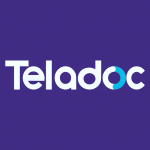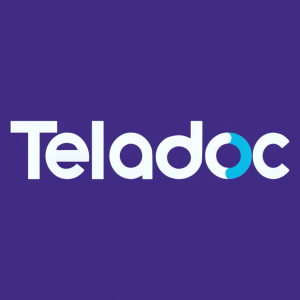Welcome to our dedicated page for Teladoc Health SEC filings (Ticker: TDOC), a comprehensive resource for investors and traders seeking official regulatory documents including 10-K annual reports, 10-Q quarterly earnings, 8-K material events, and insider trading forms.
With multiple operating segments, goodwill from the Livongo acquisition, and evolving telehealth regulations, Teladoc Health’s SEC reports can overwhelm even seasoned analysts. If you’ve searched for “Teladoc Health SEC filings explained simply,� you already know how hard it is to isolate virtual-care membership metrics, impairment charges, or reimbursement disclosures buried in hundreds of pages.
Stock Titan’s AI reviews every document the moment it hits EDGAR, turning a dense “Teladoc Health quarterly earnings report 10-Q filing� into an interactive dashboard. You’ll receive instant alerts on “Teladoc Health insider trading Form 4 transactions� plus “Teladoc Health Form 4 insider transactions real-time,� so you never miss when executives buy or sell shares. Our technology also highlights revenue per member trends, segment profitability and key risk factors, saving hours of manual review.
Here’s what our platform surfaces from each filing:
- Revenue Momentum: “Teladoc Health earnings report filing analysis� tracks visit volume and adjusted EBITDA.
- AI-Driven Summaries: Tools for “understanding Teladoc Health SEC documents with AI� translate complex notes into clear language.
- Governance Clarity: “Teladoc Health proxy statement executive compensation� pinpoints CEO pay versus outcome-based metrics.
- Ownership Moves: “Teladoc Health executive stock transactions Form 4� flags activity before and after material announcements.
- Annual Outlook: “Teladoc Health annual report 10-K simplified� extracts chronic-care strategy KPIs and risk updates.
- Breaking News: “Teladoc Health 8-K material events explained� highlights acquisitions, cybersecurity incidents or leadership changes within minutes.
Stop scrolling through PDFs. Stock Titan blends domain expertise with machine learning to deliver concise, real-time intelligence across all Teladoc Health filings.
TDOC Q2 2025 10-Q highlights:
- Revenue slipped 1.6 % YoY to $631.9 m; six-month revenue down 2.1 % to $1.26 bn. U.S. contributed 82 % of sales.
- Losses narrowed sharply. Q2 net loss was $32.7 m (-$0.19/sh) versus -$837.7 m (-$4.92/sh) a year ago, mainly because 2024 contained a $790 m goodwill charge. YTD loss is -$125.7 m (-$0.72/sh) versus -$919.6 m.
- Operating efficiency improved: EBITDA ex-items rose to $69.3 m vs. $89.5 m LY but YTD cash from ops increased to $107.4 m (+10 %). Advertising & marketing trimmed 1.6 %.
- Balance-sheet shifts: Cash fell to $679.6 m from $1.30 bn after $550.6 m retirement of 2025 convertible notes. Only $1 bn 1.25 % 2027 notes remain outstanding. Equity slipped 4.6 % to $1.42 bn; debt-to-equity now 0.70x.
- Intangibles & goodwill: New $59.1 m goodwill from Catapult Health was fully impaired, bringing total YTD impairment to the same amount versus $790 m LY. Intangibles amortization was $88.7 m for the quarter.
- Segment view: Integrated Care revenue +3.7 % YoY while BetterHelp -9.3 %. Integrated Care generated $57.5 m Adjusted EBITDA; BetterHelp $11.9 m.
- Liquidity backstop: On 17 Jul 2025 company executed a new five-year $300 m secured revolving credit facility with variable SOFR+2.75�3.25 % pricing.
Key takeaways: Profitability metrics and cash generation improved despite modest top-line softness, but cash reserves contracted materially after note redemptions and goodwill impairments continue to weigh on equity.
On 29 Jul 2025, Transcat, Inc. (TRNS) executed a new five-year $150 million secured revolving credit facility with a three-bank syndicate led by M&T Bank, replacing and terminating its prior $80 million line. The facility provides committed revolving loans, swingline loans and letters of credit and matures on 29 Jul 2030, allowing amounts to be re-borrowed subject to availability.
Pricing & fees: Base-rate borrowings carry 0.00%â€�0.75% margin, and SOFR loans carry 1.00%â€�1.75% łľ˛ą°ů˛µľ±˛Ô—b´ÇłŮłó lower than the superseded facility. Unused commitments are charged a quarterly fee of 0.10%â€�0.20%. Overdue amounts accrue an additional 300 bp.
Covenants: leverage ratio �3.0× EBITDA (with temporary step-up for “Material Permitted Acquisitions�) and fixed-charge coverage �1.20×. Customary negative covenants and default triggers apply; all U.S. subsidiaries guarantee the debt.
Use of proceeds: refinancing the old facility, funding acquisitions, working capital and general corporate purposes. The enlarged, lower-cost facility enhances liquidity, extends tenor by five years and adds structural flexibility for strategic growth.
The Vanguard Group has filed a Schedule 13G disclosing that it beneficially owns 8,969,988 shares of Talkspace, Inc. (TALK) as of 30 Jun 2025. The position represents 5.36 % of the company’s outstanding common stock, crossing the 5 % threshold that triggers passive-owner reporting under Rule 13d-1(b).
Voting authority is minimal: Vanguard reports 0 shares with sole voting power and 119,682 shares with shared voting power. However, it has sizable disposal authority, holding 8,797,669 shares with sole dispositive power and 172,319 shares with shared dispositive power. The stake is held in the ordinary course of business for clients of Vanguard’s investment-adviser arm and is not intended to influence control.
The filing, signed by Head of Global Fund Administration Ashley Grim on 29 Jul 2025, confirms that no single Vanguard client owns more than 5 % of TALK and that the group’s ownership could change based on portfolio flows.
Atlassian (TEAM) Form 4: CEO, co-founder and 10% owner Michael Cannon-Brookes sold a total of 7,765 Class A shares on 22 Jul 2025 under a pre-arranged Rule 10b5-1 plan adopted 20 Feb 2025.
The stock was disposed of in seven separate trades at weighted-average prices between $195.965 and $202.35, generating roughly $1.55 million in gross proceeds. Following the sales, the insider—through CBC Co Pty Ltd as trustee of the Cannon-Brookes Head Trust—continues to hold 375,585 Class A shares, maintaining more than 98% of his prior indirect position and his 10% beneficial-owner status.
No derivative activity or purchases were reported. Given the modest 2% reduction in holdings and the existence of a 10b5-1 plan, the transactions appear routine and are unlikely to materially alter insider alignment, though any CEO liquidation can create short-term sentiment pressure.
Form 4 snapshot: Teladoc Health, Inc. (TDOC) disclosed that director Jason Eric Evans converted restricted stock units (RSUs) into 1,016 shares of common stock on 20 June 2025. The transaction was coded �M,� indicating the exercise or conversion of a derivative security.
Following the transaction, Evans� direct holdings in TDOC increased to 7,113 shares. His remaining unvested/undelivered derivative position stands at 5,082 RSUs. The RSUs originated from a 20 September 2023 grant of 12,195 units that vest one-third after one year and the balance in eight equal quarterly instalments.
No sale of shares was reported and no cash price was listed, implying a cost-free share settlement typical of RSU conversions. The filing contains no information on TDOC’s current operational performance, earnings, or other corporate events.
In sum, the Form 4 records a routine equity settlement that modestly increases insider share ownership but does not represent a market-moving development for Teladoc Health.


